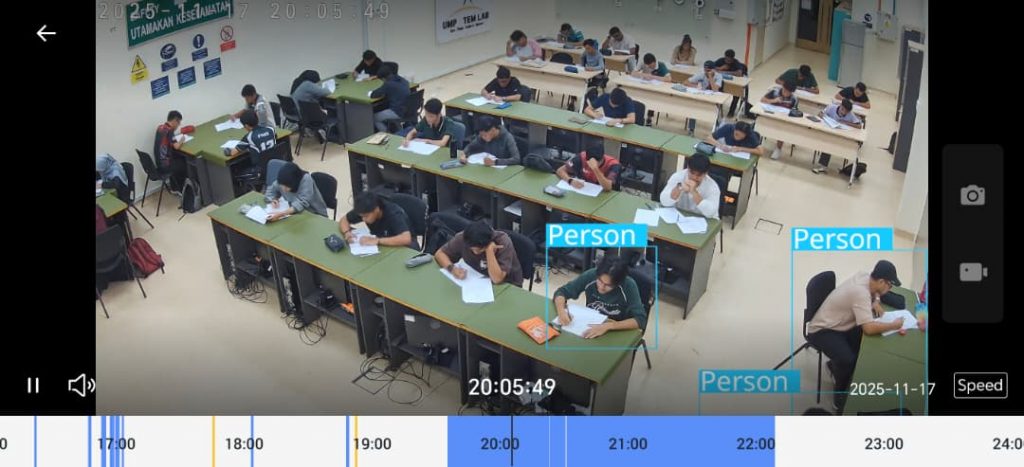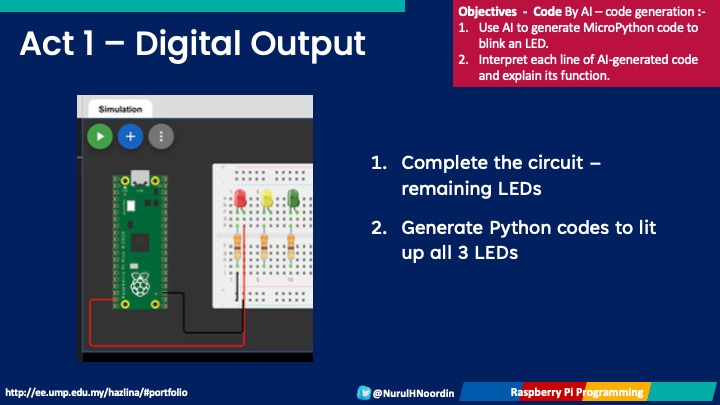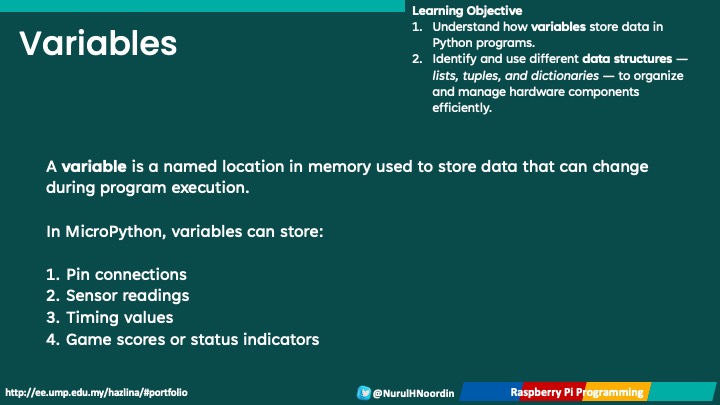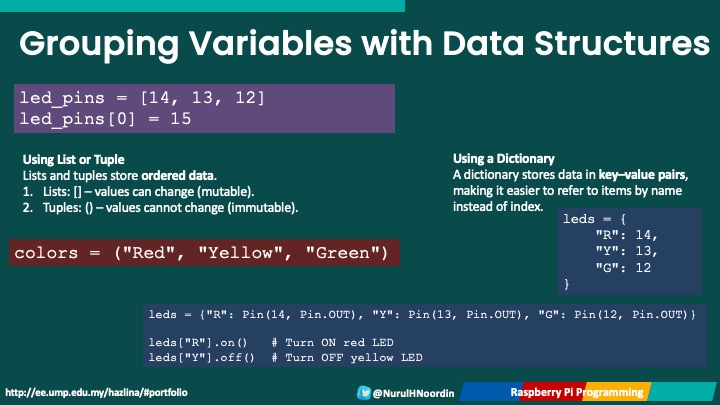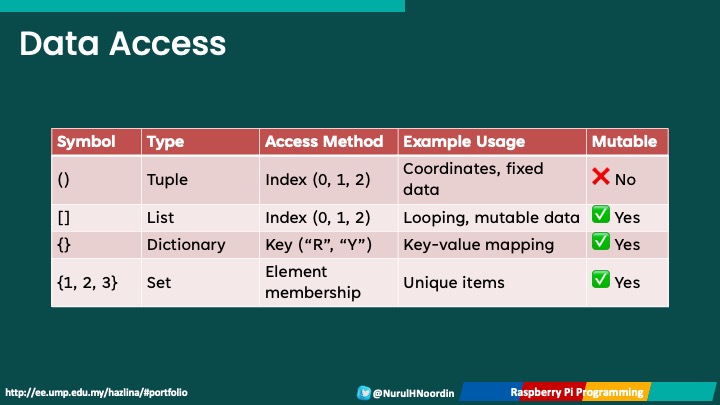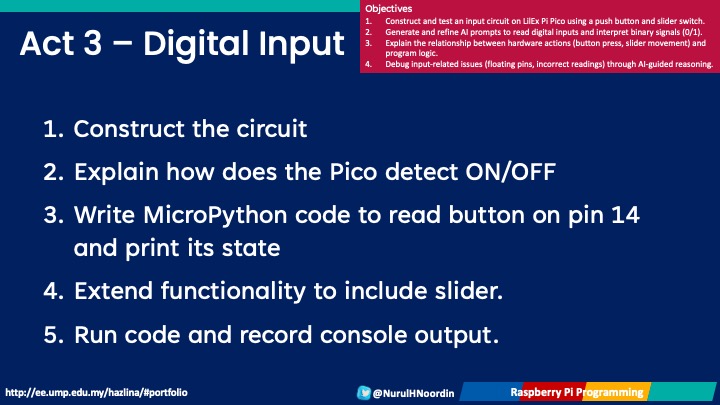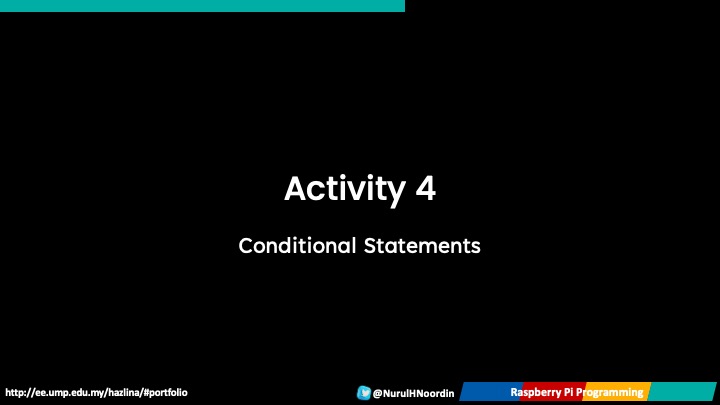Bringing Python, IoT, and Physical Computing Together =)..
Today’s class marked an important milestone for DRE2213 – Programming and Data Structure, as students presented their final projects developed using Raspberry Pi and Python, with a strong focus on environmental sensing using the BME280 sensor. The SULAM session showcased not only technical competence, but also how far the students have progressed in applying programming concepts to real-world systems – in Perpustakaan UMPSA Pekan Monitoring System.
I am truly impressed by the level of achievement demonstrated by the students. Each group successfully implemented a complete IoT-based system, covering three essential components of modern embedded and data-driven applications.
1. Closed-Loop Sensor Integration
Students demonstrated their ability to build closed-loop systems by interfacing the BME280 temperature, humidity, and pressure sensor with the Raspberry Pi. Based on predefined threshold values, the system was able to trigger actuators such as LEDs and buzzers, reinforcing key concepts in sensor reading, decision-making logic, and control flow in Python.
2. Data Logging and Management
Another highlight was the diversity in data management approaches. Some groups opted for cloud-based databases such as Firebase, while others used Google Sheets or local storage solutions. This exposed students to different data structures, data persistence methods, and practical considerations in handling sensor data over time.
3. Dashboard Development and Visualization
Students also demonstrated creativity and flexibility in building dashboards to visualize sensor data. A wide range of tools were used, including:
-
HTML-based dashboards
-
Adafruit IO
-
Flask web applications
-
Streamlit dashboards
This variety reflects students’ growing confidence in selecting appropriate tools and frameworks to communicate data effectively.
From Games to Physical Systems – A Meaningful Learning Journey
At the beginning of this course, students were introduced to Python programming through a slider game developed using Pygame. This approach allowed them to grasp fundamental programming concepts—such as variables, loops, conditionals, and functions—within a digital and interactive environment.
As the course progressed, students transitioned from digital game development to physical computing projects, applying the same programming principles to real hardware and sensors. This combination of digital embodiment (game development) and physical embodiment (IoT systems) provided a strong foundation for understanding how software interacts with the real world.
Learning programming in an interactive and hands-on manner enables students to truly understand what their code is doing. Instead of writing abstract programs, they can see, hear, and measure the outcomes of their code—whether it is a game reacting to user input or a sensor triggering a buzzer based on environmental conditions.
Closing Reflections
Today’s presentations clearly demonstrated that interactive, project-based learning is an effective way to teach programming and data structures. By engaging with both digital and physical systems, students developed not only technical skills but also problem-solving confidence and design thinking.
Well done to all DRE2213 students on your excellent work. Your projects reflect strong effort, creativity, and meaningful learning. Keep building, keep experimenting, and keep pushing the boundaries of what you can create with Python and Raspberry Pi.





























































































